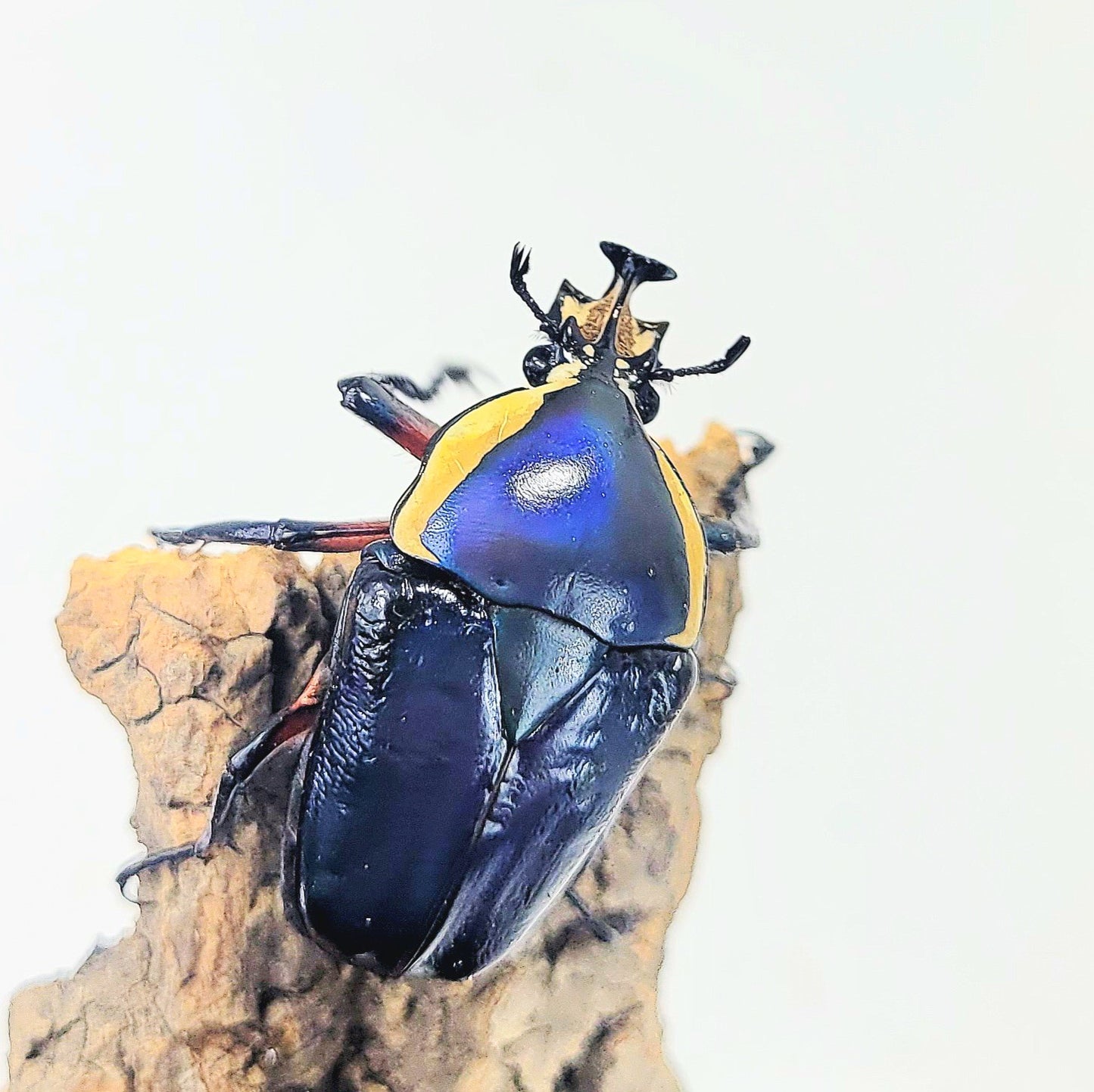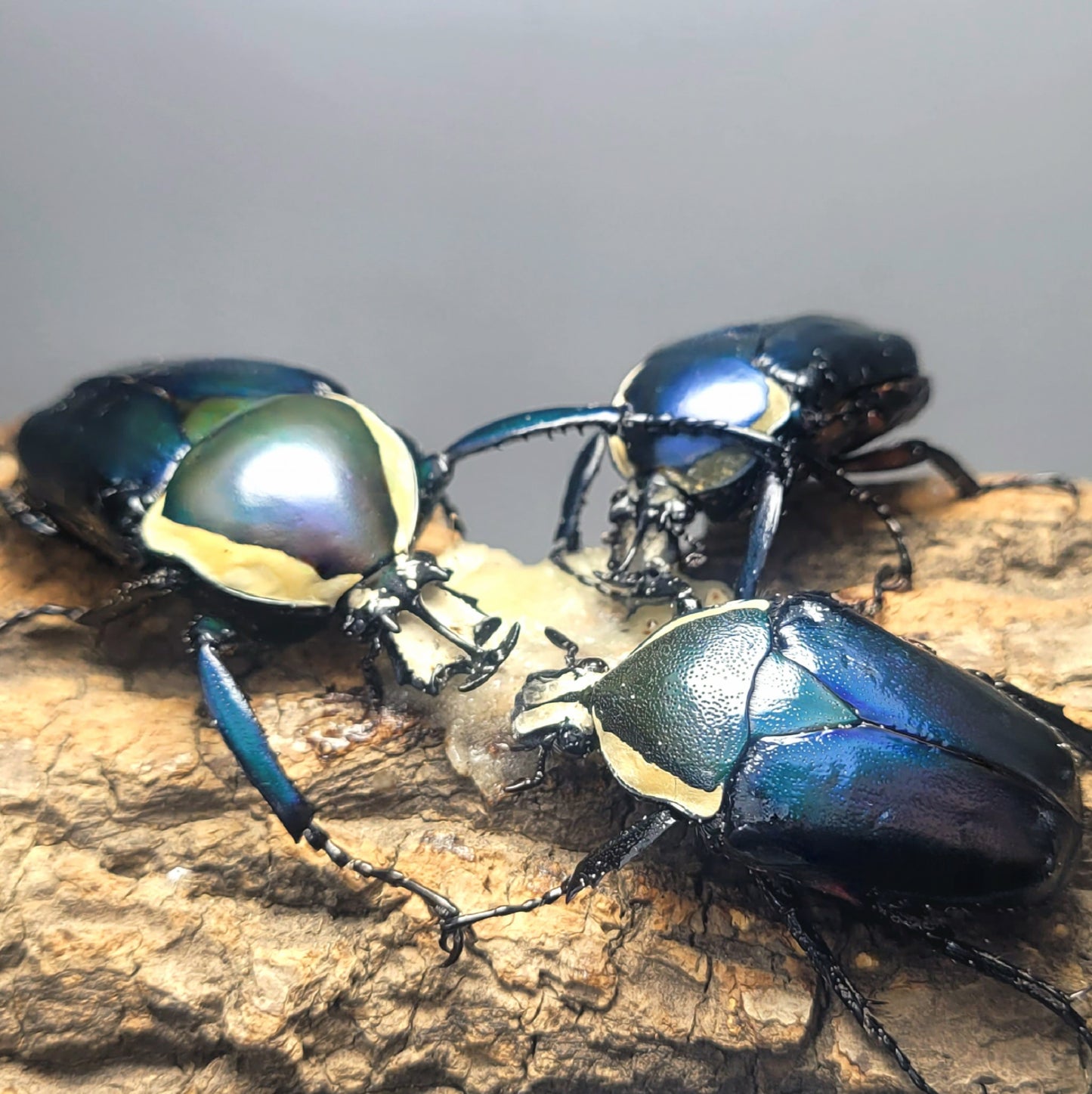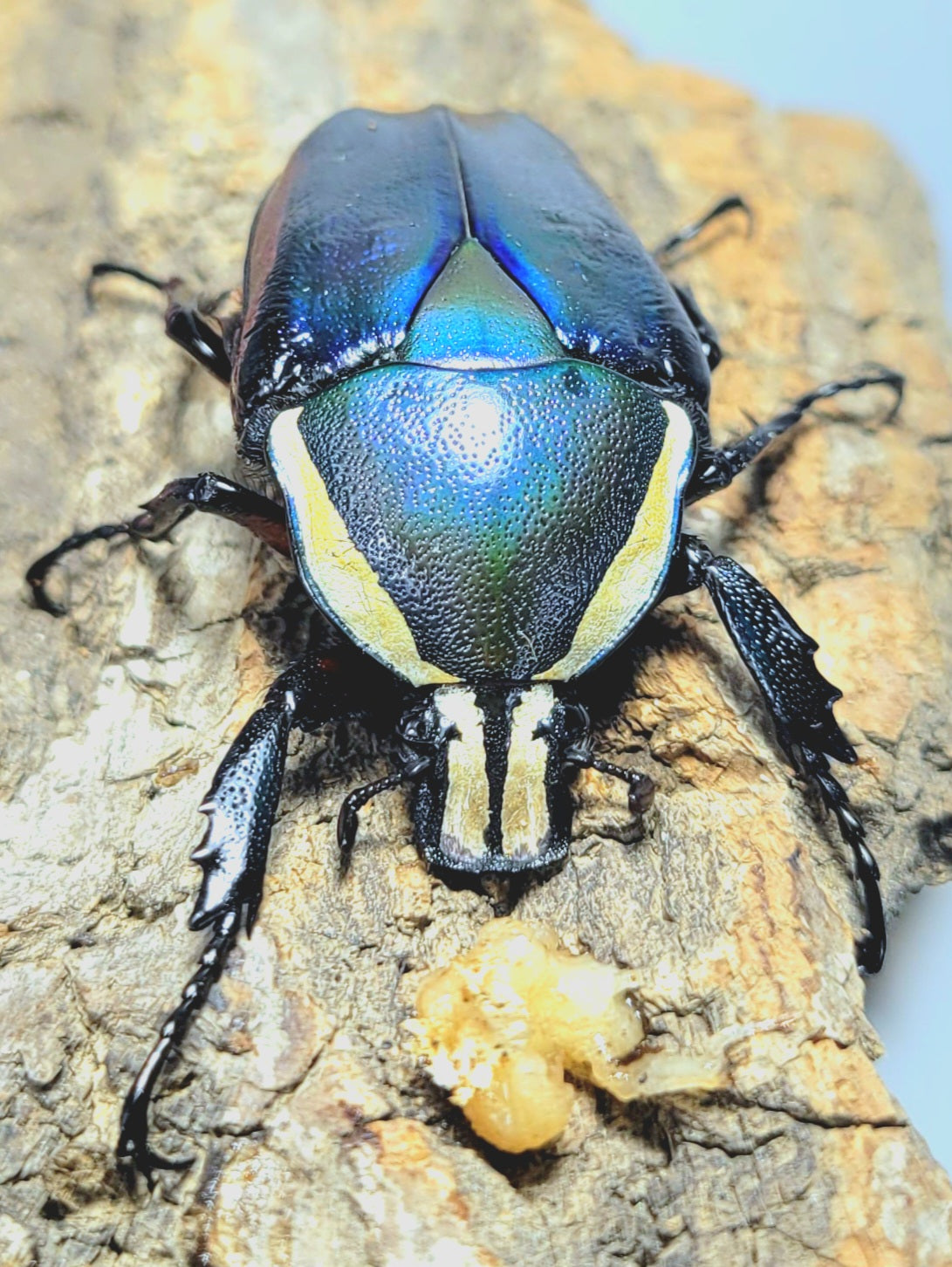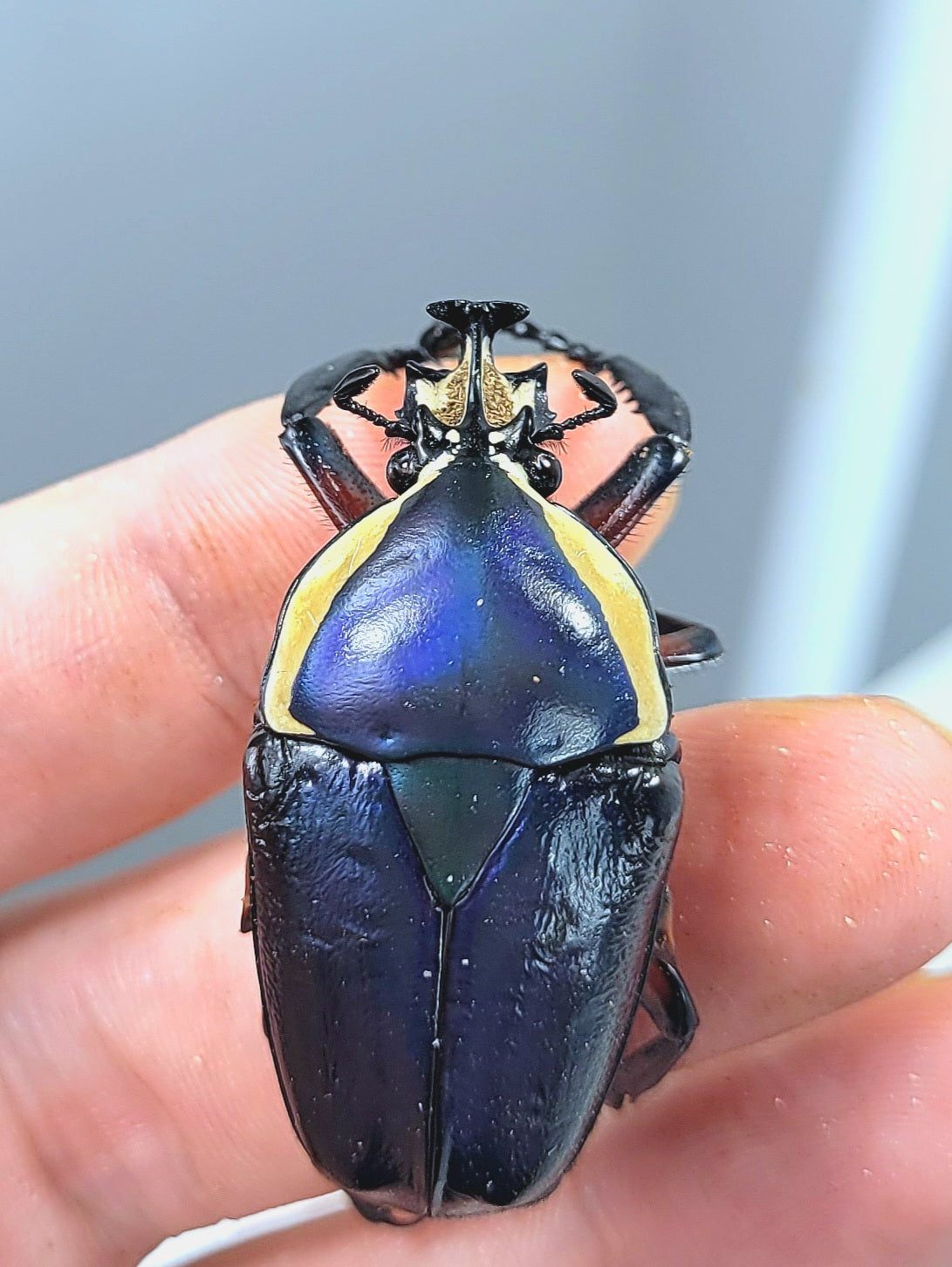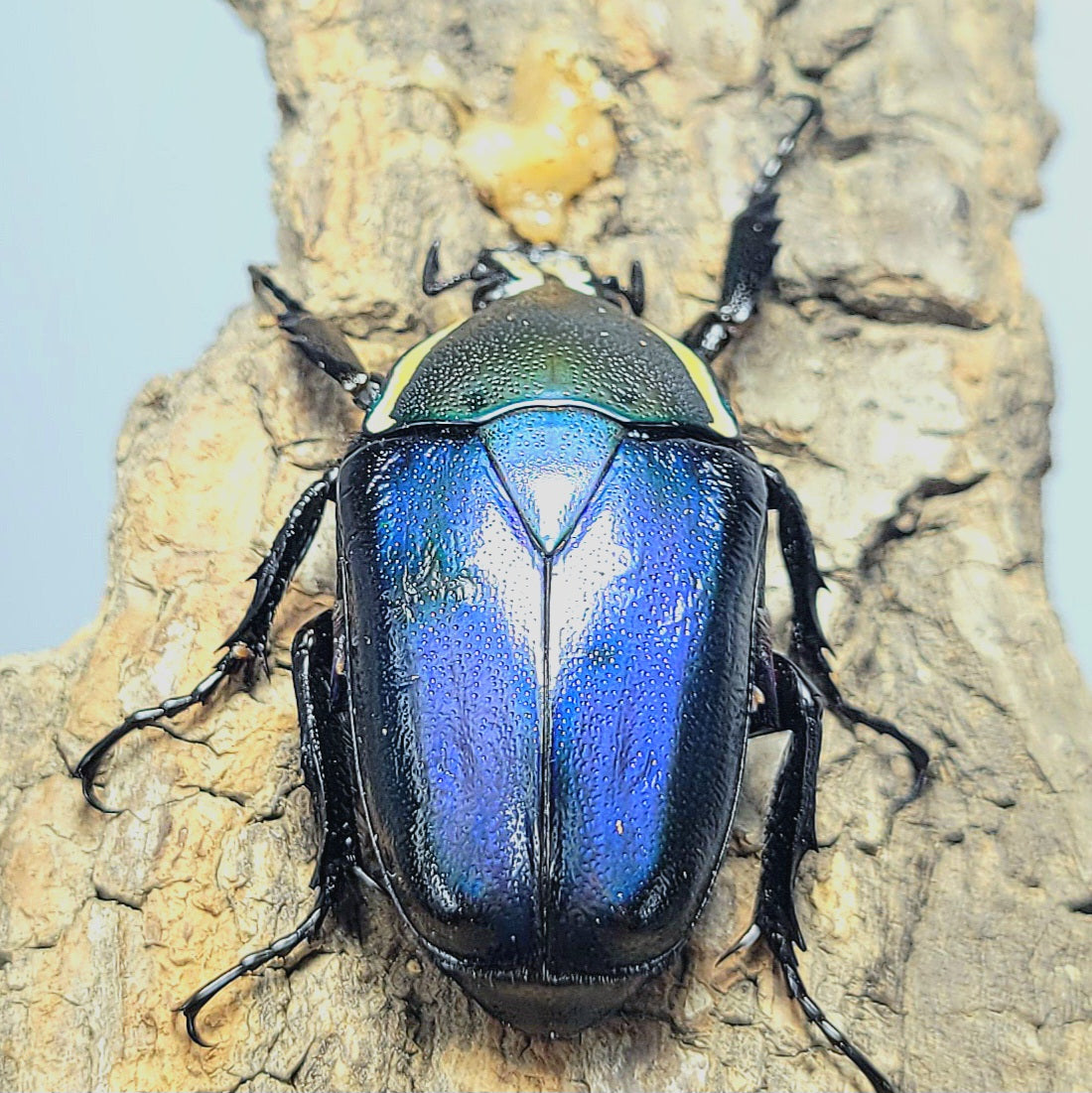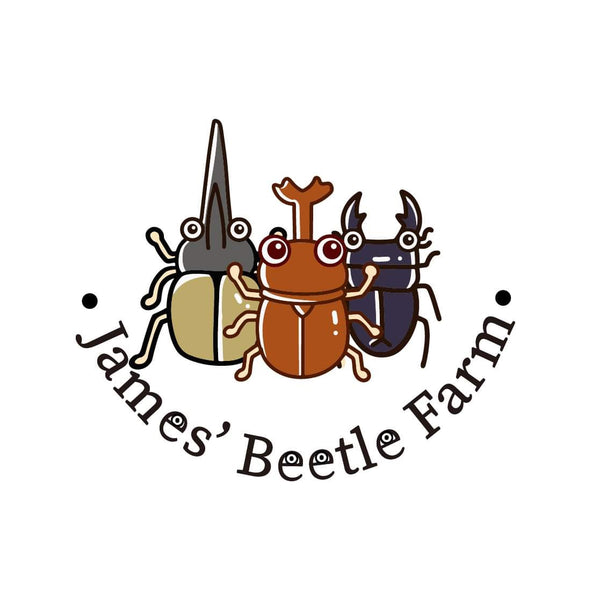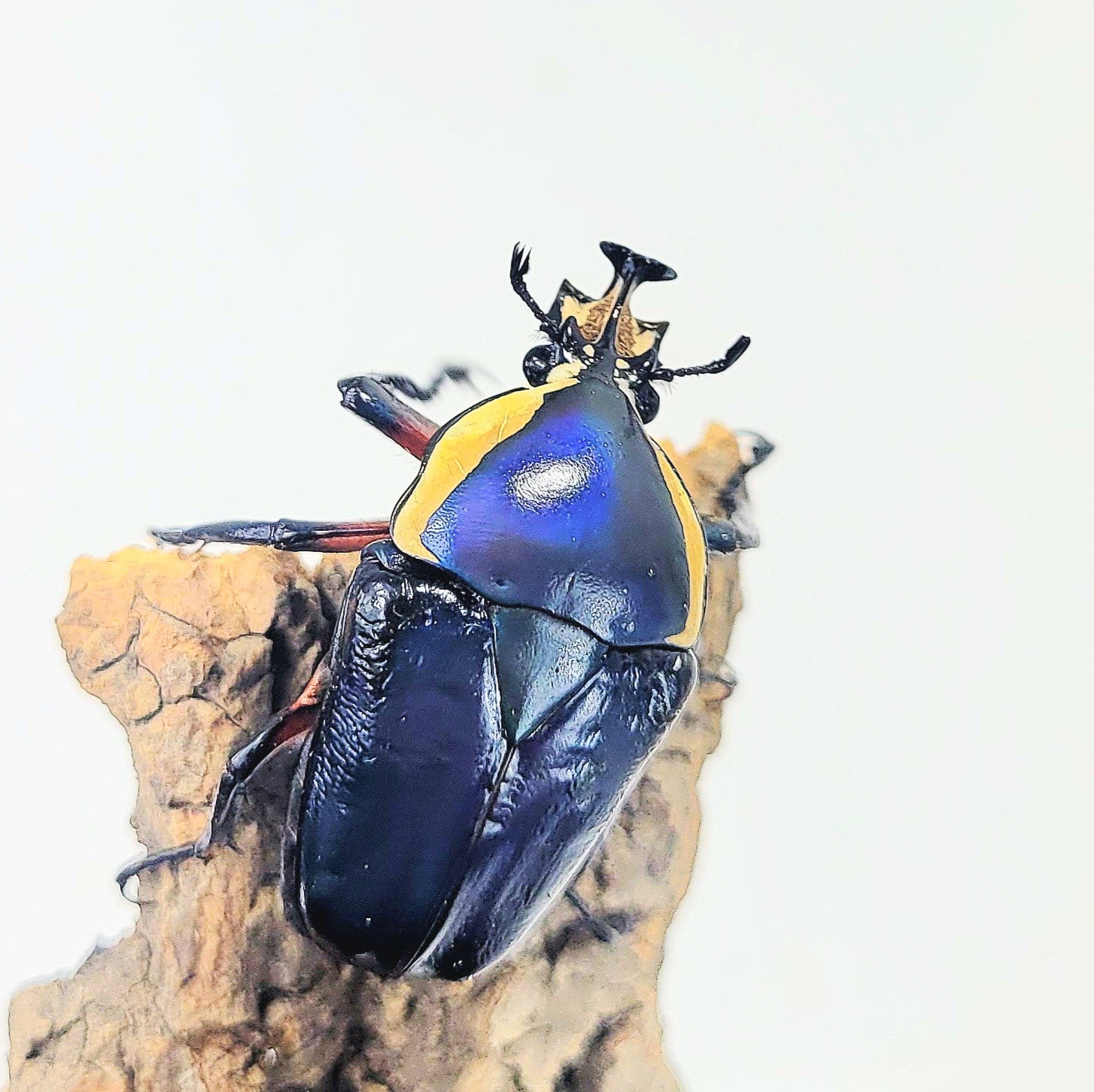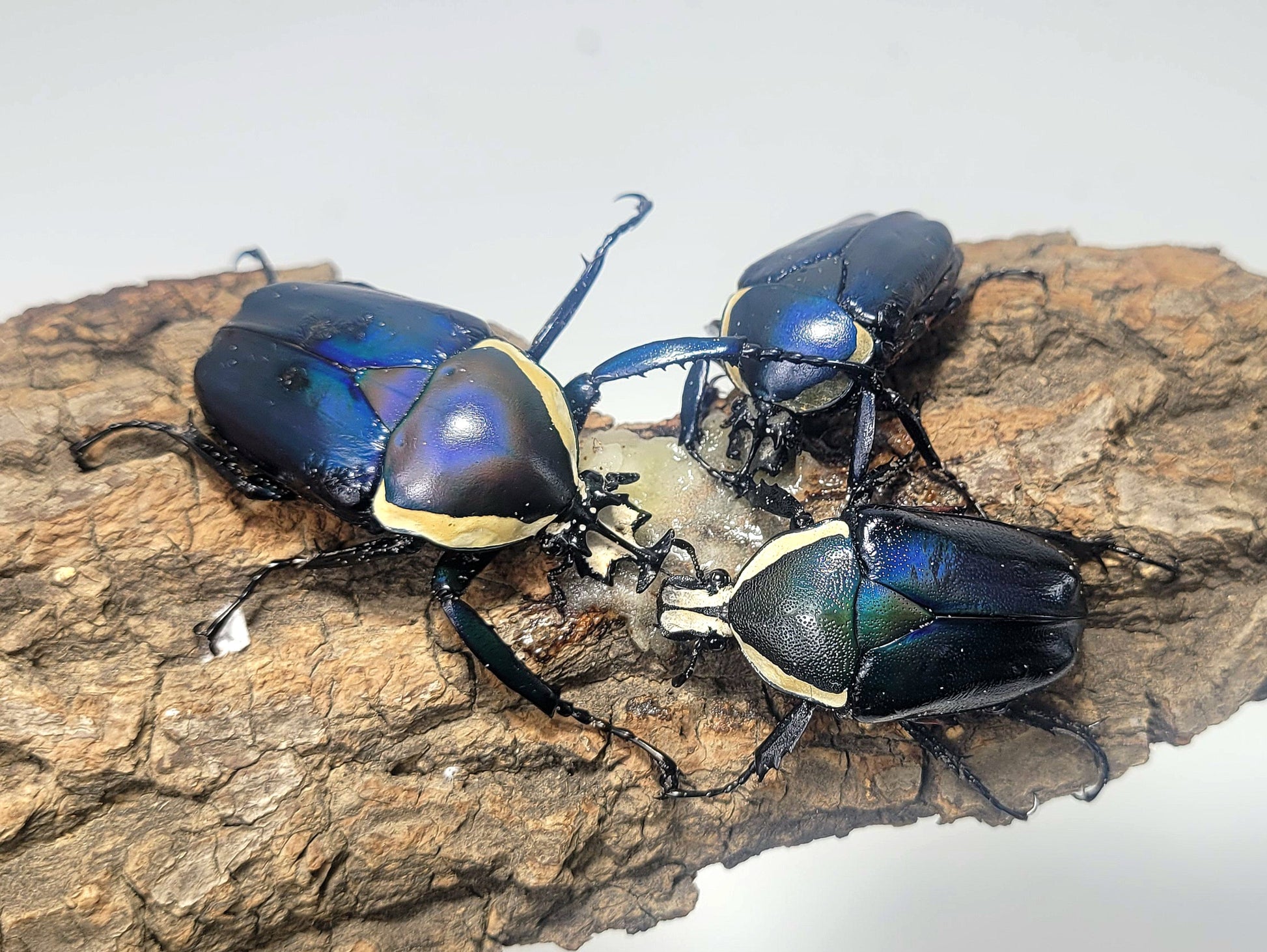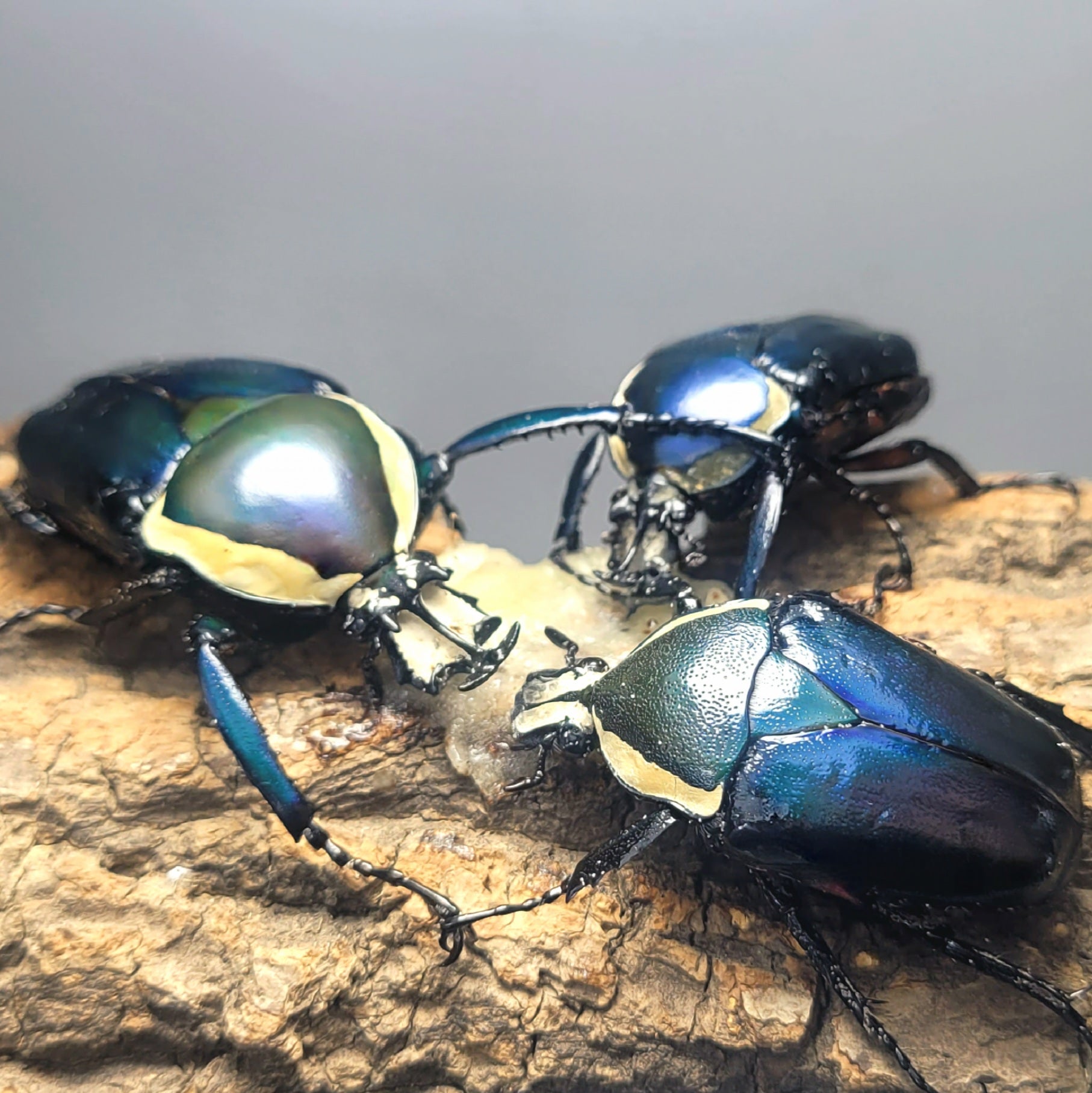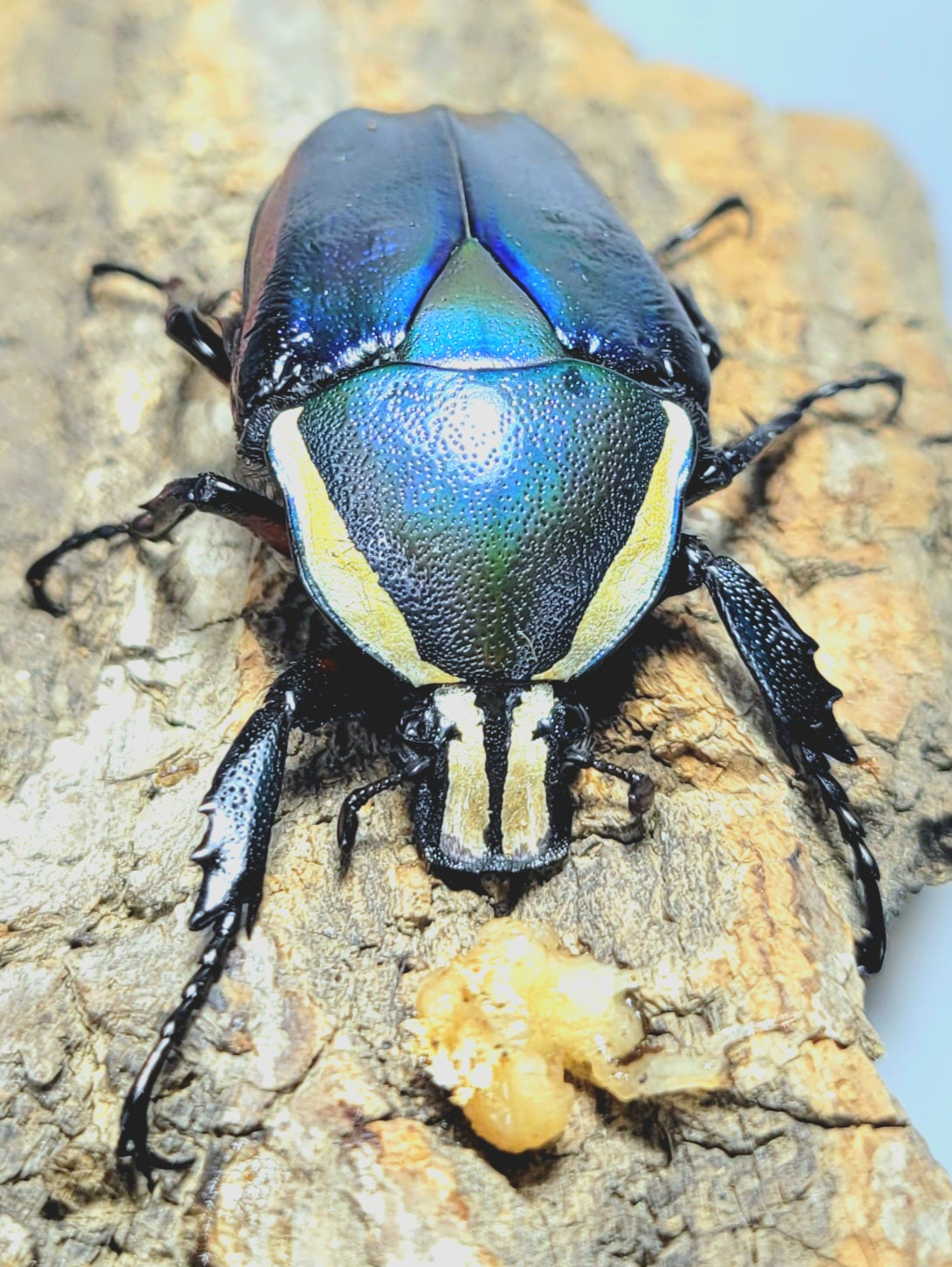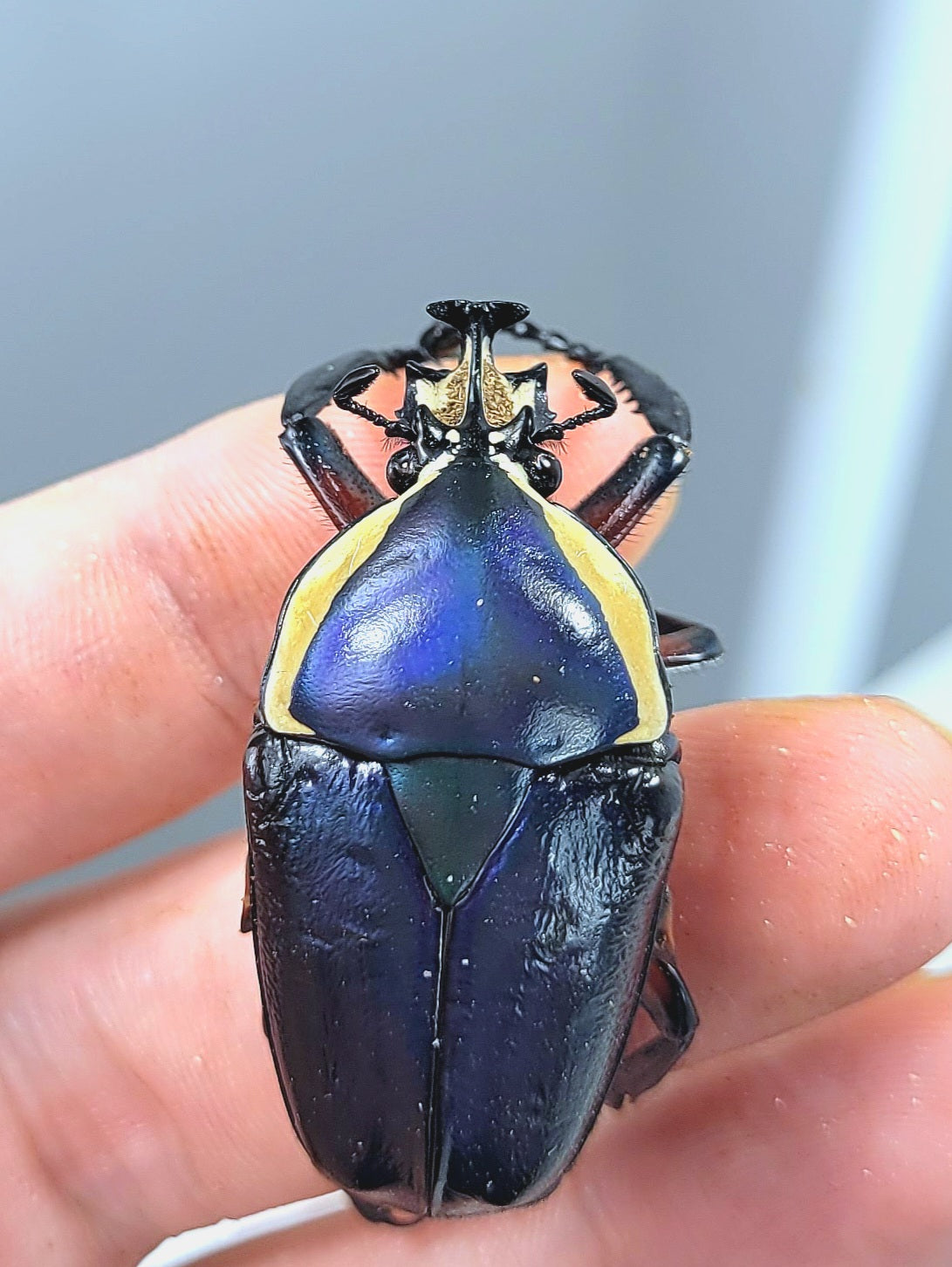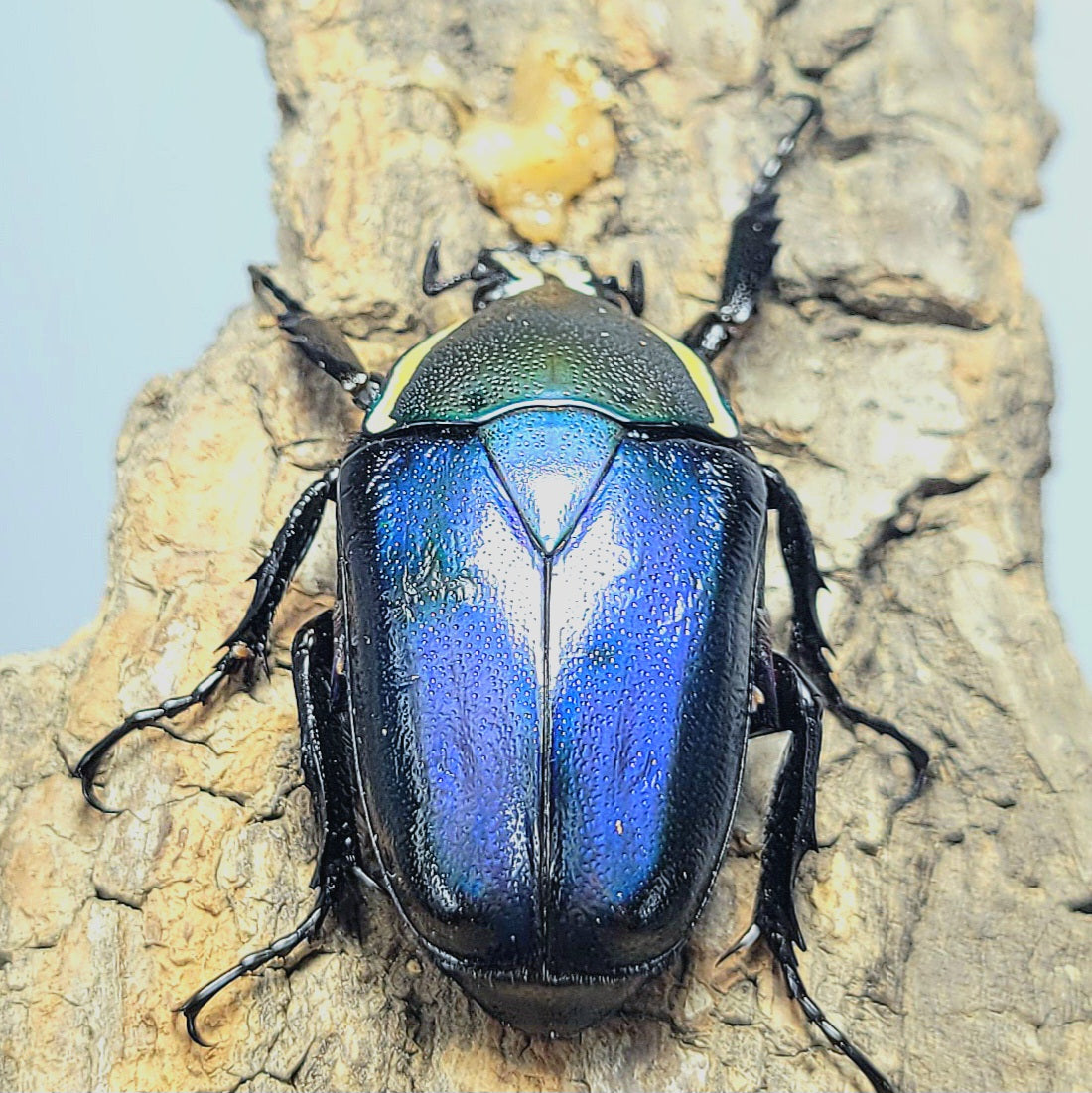James' Beetle Farm
Blue Derby Flower Beetle (Dicronorhina derbyana)
Blue Derby Flower Beetle (Dicronorhina derbyana)
Couldn't load pickup availability
Species Summary:
Adult lifespan: 2-4 months
Pupa period: 1-2 months.
Larva period: 4-6 months
Breeding difficulty: 2/10
Species Info:
Dicronorrhina derbyana "Blue," commonly known as the Blue Derby Flower Beetle, is an exceptionally beautiful and sought-after beetle species within the Cetoniidae family. Its striking appearance and relatively easy care make it a prized possession for insect enthusiasts, especially those interested in keeping large, colorful beetles.
The Blue Derby Flower Beetle is renowned for its vivid blue-green metallic coloration, which can vary slightly in hue depending on the individual. Adult beetles are quite large, typically measuring between 30 to 40 millimeters in length. Their glossy, iridescent exoskeleton, combined with their robust and impressive size, makes them stand out in any collection.
The males are easily distinguished by their prominent horn, which they use in combat with other males during mating contests. Native to the tropical regions of Africa, Dicronorrhina derbyana thrives in warm, humid environments. These beetles are diurnal, meaning they are most active during the day.
In the wild, they can often be found in forests and wooded areas, where they feed on tree sap, fruit, and other organic matter. Their activity during the day makes them more observable and engaging to keep as pets.
The Blue Derby Flower Beetle has a diet that is relatively simple to manage. Adults primarily feed on sweet, soft fruits such as bananas, mangoes, and oranges. They can also be given beetle jelly, a common food supplement for captive beetles, which provides necessary nutrients and hydration. The larvae are less demanding but require a substrate rich in decaying wood and leaf litter to thrive. A mixture of compost and rotten wood works well to support their growth.
Breeding Dicronorrhina derbyana in captivity can be a rewarding experience, though it requires some attention to detail. Males and females should be introduced in a spacious enclosure with plenty of substrate for egg-laying. Females will lay eggs in decaying wood or leaf litter. The larvae, which are relatively large, go through several instars (developmental stages) before pupating in a chamber they create from substrate material.
After several months, they emerge as adults, ready to begin the cycle again. The Blue Derby Flower Beetle has a moderate lifespan, with adults typically living several months under proper care.
To keep them healthy, it’s important to maintain a warm and humid environment, similar to their natural tropical habitat. Regular misting and the use of a heat source can help achieve the necessary conditions. These beetles are generally calm and can be handled carefully. However, due to their size and strength, it’s important to be gentle when interacting with them to avoid causing stress or injury.
Their stunning appearance and relatively calm demeanor make them a joy to observe,
especially during their active daytime hours.
Dicronorrhina derbyana, or the Blue Derby Flower Beetle, is a captivating species that
combines beauty with ease of care. Its vibrant metallic blue coloration and impressive size make it a standout in any collection. While they require specific care to thrive, their straightforward diet and manageable breeding make them suitable for both experienced and aspiring beetle keepers. With the right environment and attention, the Blue Derby Flower Beetle offers a fascinating and rewarding experience for anyone interested in the world of exotic insects.
Share
